Pages Of Magazine: Circa 2013-2014
This was the website for Pages Of, a new culture and urbanism magazine, co-edited, designed and published by journalist and curator Crystal Bennes and art director Cecilia Lindgren. Content is from the site's 2012-2013 archived pages offering a glimpse of what this site offered its visitors.
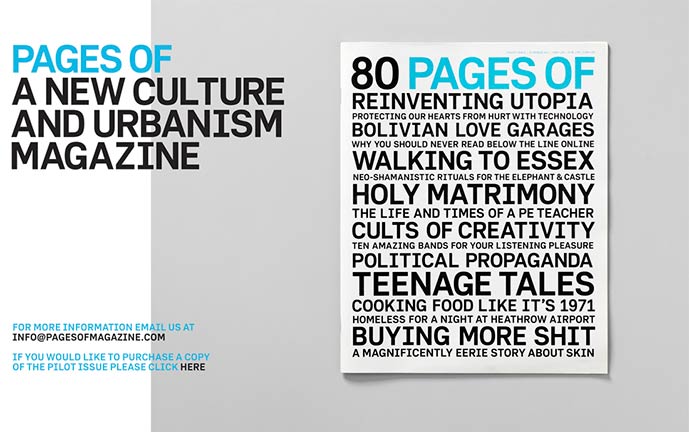
Features
Astronomy Picture of the Day
In the hyper-trendy online world of cool hunters and inspiration curators, the Astronomy Picture of the Day (APOD, as it’s more commonly known) website is something of a digital relic. Created in 1995, despite its analog feel, or perhaps because of it, the website is one of the most successful communications projects not just in astronomy, but across all the sciences.
A physics-studying friend of mine back at University first introduced me to the wonders of APOD in 2001 and I’ve been hooked ever since. Its combination of jaw-dropping imagery and plain-speaking explanations are a potent combination, making the heavens exciting and accessible even for the amateur enthusiasts among us.
Curious about its origins and its future, Pages Of asked co-founder of APOD, Professor Robert Nemiroff, a few questions
When you started APOD, was it with the clear goal to begin a science outreach project?
Yes, we (Jerry Bonnell and myself, the two APOD authors) did have a clear outreach goal. We saw many astronomy images being circulated without good explanations, many as email attachments. We decided to try to make astronomy, at the least, one area of the web where popular images can be found with at least a minimal explanation.
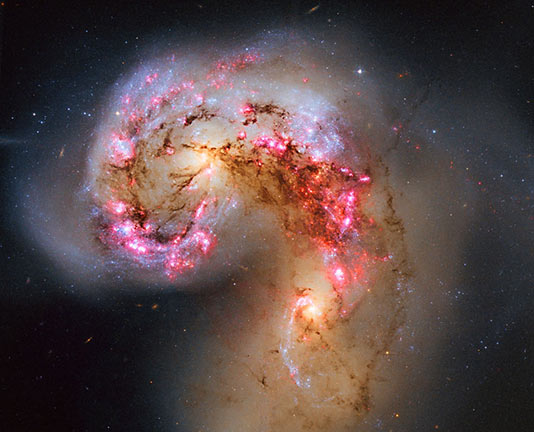
Is it difficult to write the explanation for each photo? How do you tread the line between explaining thoroughly and losing people, and not explaining thoroughly enough and irritating your academic colleagues?
I don’t know if it is difficult, per se, but I think I have gotten better over the years. I try to write on a variety of levels so that curious readers with only a passing interest all the way up to professionals will get something out of it.
To be realistic, I would estimate that more than half of APOD’s readers see only the image and title. Everyone is always busy, and reading the APOD caption is always a choice. For that reason, we try to choose images that are not only interesting, but particularly intriguing or educational. The titles try to be minimally descriptive. I frequently try to expand on the potential intrigue of the image in the lead sentence of the caption, sometimes echoing a question the viewer might have had when first seeing the image.
Next, I may try to answer this lead question early, without too many details. This is primarily for people who have ventured only into the early text, so they feel some closure and have an exit if they really don’t want to read on. Later sentences in the caption will add more detail, or as much detail as can be added in the single paragraph APOD provides. The last sentence in the caption may try to bring closure to those who read the entire caption, possibly speculating on what happened after the picture was taken, or on the long term possibilities for the type of research mentioned. In this sense the APOD caption is a like a one paragraph story.
The hyperlinks, however, are really the place where the greatest understanding is conveyed. I believe that links serve as a useful and frequently under utilized dimension in writing hypertext. Many times a good link will free me from explaining something in detail that many readers would find boring or overly pedantic. I visualize a good link like a powerful skyscraper jutting out of the screen, adding valuable depth to an otherwise too-flat explanation. We use links liberally in APOD and I sometimes wonder why others rarely take such advantage of the wonders of hypertext.
Specifically, on APOD, links to more detailed popular articles or press releases are given here for people who may have missed some background information, or who just have had their interest piqued. On the deepest end, many times I will also link in journal articles so that even a professional scientist can read up on the latest research involving the featured image. Perhaps then, like me, they can pretend they always knew.
For images involving landscapes, I will frequently ask the photographer if there was an interesting story behind the taking of the image. Many times there is, and I can summerise it in a sentence or two in the caption. In one case that comes to mind, the photographer complained that wild donkeys brayed annoyingly during the long exposures. Therefore in this caption, I not only mentioned the donkeys, but linked in a YouTube clip of a donkey braying annoyingly. Take THAT print journalists!
Sometimes I add in a purely humorous link, if I can find a relevant one. Yes, this does include the occasional cute cat image or video. I am not sure why those images are so compelling but they really can add yet another dimension to the caption. I also try to include a link to at least one educational video as there are so many good and informative videos out there. This is another way that hypertext writing can be engaging.
+++
Does APOD relate to your “day job” research?
Not very much. APOD does help keep me up-to-date with the latest astronomy findings which is useful for both research and teaching.
I know you receive vastly more images than there are days to post them. Where do you get images from and how do you decide what to post?
Unfortunately, APOD has to reject about ten images for each one that appears. Still, many of our best images are sent in. Alternatively, we find images through emailed press releases or just by chance while surfing the web. Sometimes an image is just so striking I know within two seconds that it is APOD material. Also, very intriguing images where I wonder “what is THAT” or “WHAT is going on there?” are usually good possibilities. Last, if the image is clearly a “classic”, meaning that it bound to end up in astronomy textbooks for generations to come, then it is surely going to end up on APOD. In this sense, APOD’s past entries, all still online and searchable, can be considered an encyclopedic archive of the best sky images of our time. About deciding what to post, we try to keep changing the topics inside a broad definition of astronomy.
Typically anything “up” is fair game. Most people’s lives deal with looking down most of the time. On APOD, we try to take people in the opposite direction.
~~~
Impact: When I was considering moving my elderly father to a Maryland assisted living facility nearby to where I live in Bel Air, I wanted a place where my father would be able to go outside to look at the sky in the evening. My father has been an astronomy buff all his life. He was so delighted when I introduced him to computers and he discovered he could go to the APOD NASA website to check out their daily featured photograph of our fascinating universe, along with a brief explanation written by a professional astronomer. The Hart Heritage Estates which is a senior living residence was the perfect fit. Their Forest Hill facility was carefully planned to give the look and feel of a contemporary design while maintaining a rural atmosphere. This home for seniors is nestled on 6.5 acres of park-like grounds with plenty of open space to gaze at stars! Several of the other elderly residents share my father's passion. The arrive at my father's room every day at 3:00 PM to check out NASA's Astronomy Picture of the Day image. I bought my father a IMAC computer with its large high definition monitor so the images could be easily seen and appreciated.
BTW: My father was a fan of Pages Of while it was active, so I just want to do a shout out to Crystal Bennes and art director Cecilia Lindgren saying THANK YOU.
~~~

Tromsø and Sø Øn
I love this letter, Ø, which comes after Z in the Norwegian alphabet. It’s beyond omega, it’s always one step away, it’s cancelling or forbidding something. I don’t know how to pronounce it. It’s a spike through the tongue, a razor blade through the eye, a cloud bisecting the Moon, the forbidding bar sign in an incomprehensible Lacanian ‘graph of desire’.
Ø
I’m working on a book of poems about the Sun, so I’m heading to where the Sun don’t shine. I want to bathe in its absence, mourn its presence, see if I miss it at all. I’m travelling with another poet (ABJ) who’s writing about polar exploration and the sublime.
We decide that ø is pronounced as a whistle, so that Tromsø becomes something like Tromsooooeeeewhit! This amuses us no end.
On the plane I’m fascinated by the failing sunlight as we head north. By the time we’re over fjords and mountains, the light merely glances the peaks, pinkens, weakens, and flickers out. We land around noon and the Moon is high, daylight doomed.
Ø
Tromsø is a very safe town. The only danger, as far as I can tell, is sliding into the road at junctions and crossings, and being run over. In January there’s a layer of permafrost on roads and pavements and if you’re walking downhill towards a road you need to cross, it’s very hard to keep from gliding into the path of a bus; maybe a bus full or tourists on a ‘Northern Lights Safari’. Later in the week we see a taxi slide into a car and dent its bumper. The people of Tromsø crash gently and convivially. The drivers exchange particulars with a smile, a chat, a slap on the back.
Ø
The Sun sets as it tries to rise, or vice versa. It’s risible. Also, two weeks into January and Tromsø is still sneakily having Christmas. Through the windows of beautiful wooden houses, I see rooms aglow in a state of permanent Christmas Eve. No people. The rooms remind of me of the sumptuous background drawings of classic Tom and Jerry cartoons. Tromsø makes me miss my childhood. Or someone’s childhood.
Ø
Near our hotel, there’s a lovely little park where you can sit and while away the hours between sunrise (it doesn’t rise) and sunset (it doesn’t set but it’s pitch black by two in the afternoon).
Ø
The Verdensteatret Kino cinema bar becomes our first and favourite haven. For as little as £10 you can have a latte and a sweet coconutty bun the size of your head; in fact the size of your head with your Arctic jacket hood pulled over it. The Tromsø International Film Festival is on this week and the Kino is one of the venues. We come here at least once a day. There are shelves of vinyl records and a Technics deck behind the bar. They specialise in soundtracks, from Amarcord to Zabriskie Point but Reservoir Dogs is a particular favourite.
It averages -8° outside all week. Not too bad, but cold enough to trek to the Kino in several layers and to become instantly too warm as you step inside. Half the chairs are occupied by piles of fleeces, jackets, scarves and hats. You don’t rush anywhere in Tromsø: you have to reassemble your layers. I watch one woman elaborately prepare for her exit, sealing every chink where cold air might sip her heat away, and applying creams to her face. There’s something touching about these earnest preparations for the next expedition, the accommodation of the environment.
Ø
It soon becomes clear that ø also represents the disappearance of coins from your pocket (coins get so cold here!), pounds from your wallet, rows of noughts from your bank account. We can’t afford to get tipsy.
Ø
ABJ has discovered that there’s a ‘polar zoo’ 25 miles to the south. The girl on reception reads to him from the tourist leaflet: “It says that you can give a carrot to a moose.” My friend explains that his chief ambition on this trip is to give a carrot to a reindeer. “But a moose is better than a reindeer! It is science.”
Ø
I have an idea for a visual poem about Tromsø. I also jot down a potential title for another poem: ‘Poem in Which ABJ Covets Other Men’s Norwegian Knitwear’. He’s gone a bit crazy over the local fashions. Everyone seems to be wearing a ‘Christmas jumper’ and yet everyone looks cool, hip, on-trend. There’s a totemic jumper in a craft shop near the Kino to which we pay homage every time we pass.
It’s as much pageant as garment and features not only the Arctic Cathedral but, above it, the aurora borealis. We covet this jumper but it’s not for sale. We also think it would cost tens of thousands of kroner.
Ø
We are booked on a ‘Northern Lights Safari’, so head to the Radisson Blu hotel, which is the hub of all nocturnal excursions. Our coach will head away from the artificial lights of Tromsø, onto the mainland, close to Finland, and will chase the lights until we find them. Unfortunately it’s overcast and it looks like snow.
So begins a seven-hour coach journey into the night.
After several near-misses, we finally experience the splendour of the aurora: bolts of chartreuse energy wafting overhead as we make snow angels, our cameras on tripods quietly capturing the spectacular solar event for posterity.
Actually, that’s a lie. We drove around and around for hours to see the Moon behind clouds.
Which isn’t to say that the trip wasn’t enjoyable. We visited a traditional Sami hut, drank hot chocolate, and ate a strange little cake made of pastry, goat’s cheese and sugar. An English couple on the tour set up their tripod to take ‘air writing’ photos of each other as they signed their names with torches. A couple of young hipsters from London sipped whisky and listened to what seemed to be ‘sick tunes’ on his iPod. They also snogged a lot and didn’t look at the sky very much.
Our cheerful safari leader kept receiving reports from colleagues, and the driver’s wife, that there were clear skies over such and such a place, and so we would pile back into the coach and drive to another over-clouded spot. I think he knew there was no chance of catching the lights from the outset, to be honest.
We were slightly disappointed but pleased to be back in Tromsø while the bars were still open (early closing on a Sunday night is 2 a.m.) and it was good to see the love-heart strewn streets again. Because of these hearts, we talk a lot about the people we’re missing.
Ø
All hail the Ølhallen! We can’t afford to drink much beer but the Ølhallen (‘beer hall’) is one of the best places to surrender your kroner. Opened in 1928, it is Tromsø’s oldest pub and is devoted entirely to the beers of the world’s most northerly brewery: Mack. The hall is quite eccentric: it opens at 10 a.m. and closes at 6 p.m. and women have only been allowed in since the late 60s.
ABJ insists I photograph him by the stuffed polar bear. It’s a noble beast but it has no claws. I think they must have snagged too many handbags and scarves as customers filed past the bear. One of the pub’s most famous drinkers over the years was Henry Rudi, the ‘Polar Bear King’, who reputedly hunted and killed over 700 polar bears in his career as a trapper.
It’s hard to like a man who has killed over 700 polar bears but it’s easy to like a beer hall that allows you to bring and eat your own food over a pint of Mack’s ‘Northern Lights’. It’s the closest we’ll get to the aurora.
Ø
In our second favourite haven: Bar Sønn, which is also attached to a film festival venue: the KulturHuset, we discuss research and poetry. We’re both here researching poetic projects but simply collecting facts and information and impressions isn’t enough.
Neither of us wants to end up transcribing information into poetic form, stuffing our undead poems with sawdusty facts or stolen anecdotes. We’re haunted by the spectres of ‘the holiday poem’, ‘the travel poem’, ‘the Wiki-poem’, ‘the quirky poem’, even ‘the found poem’. It seems our poems should be formed somehow from no content, negatively, without substance, empty, slashed through, barred.
Ø
ABJ went husky sledding and had quite an adventure, involving a trip to A&E. It’s his tale to tell, though.
Ø
I can see the Arctic Cathedral from my hotel room window. We cross the bridge for a closer look. I would definitely become a churchgoer again if this were my local place of worship. Inside there’s a christening going on and many people in traditional dress. There are two huge bells at the front of the cathedral, which remind me of the closing shot of Breaking the Waves. From the side, the Arctic Cathedral looks like the dog Dougal from The Magic Roundabout. I can see him snaffling sugar lumps: his Eucharist.
Ø
The Polarmuseet is a tiny museum which nonetheless feels, like many museums, infinitely vast. I’m fascinated by the stuffed seals and Arctic foxes (I love the Norwegian word for this species: fjellrev) but am most disturbed by the ‘polar bear self-shooting trap’.
A self-shooting trap is basically a box containing blubber attached to the trigger of a shotgun. Curiosity may kill the cat, but hunger blows the polar bear’s head off. This stuffed fellow is a study in blissful unawareness. He still has his claws. The Norwegian for polar bear is also lovely: isbjørn.
Ø
There’s a lot of ‘competitive northern lights-spotting’ in Tromsø. A couple in the hotel tell us over breakfast of how they hired a car, drove to the mainland and then into Finland, got off the main roads, found an unlit track , drove until the track dissipated somewhere in the mountains, and were treated to the most awesome display imaginable. They were tremendously moved and, even though they’d already had several fantastic sightings on this trip, they simply weren’t prepared for the overwhelming force of last night’s display.
We are pleased for them. We eat more brown goat’s cheese on crackers. We are at the bottom of the northern lights-spotting league.
Ø
On ABJ’s last night, in Bar Sønn, we have enough kroner to keep us going until the polite and eloquent bouncer (I wonder what the Norwegian for ‘bouncer’ is?) invites us to leave at 3.30 a.m. I ask him if he’s looking forward to the day when the Sun will appear above the horizon again. Yes, he says, he will have a party with his friends. I suggest to him that, “You have parties because you miss the Sun like a person, don’t you? You miss it like a lover!” “Yes, of course!” He shakes our hands and we slide back to the hotel. The Norwegian for bouncer is dørvakt.
Ø
I’ve been thinking of this letter as the absent Sun but maybe it’s a heart with an arrow through it. Or a heart sat around, waiting for an arrow.
Ø
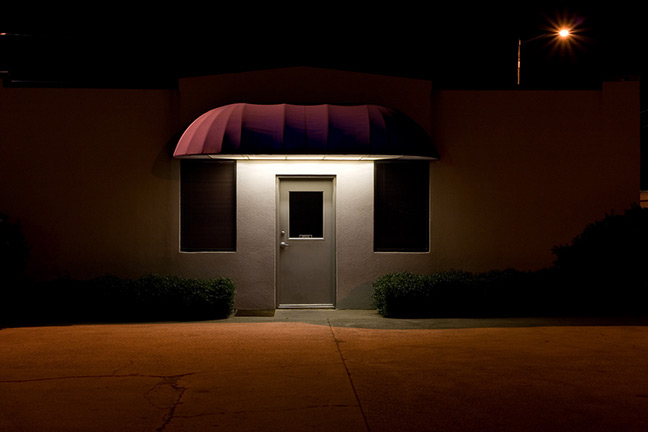
Mastering Business Administration
We were all hellbent on getting rich. You don’t take an MBA from LSE without a game-plan. Indeed it was something to look round the lecture hall and see all these thought-leaders of tomorrow, these captains and captainettes of industry. There was little time for coupling (we were so driven) but somehow Miki and I hit it off. I bought her a coffee. Next thing you know, we’re spinning around town in her Mazda to the sounds of J-pop. It was too surreal to be embarrassing. I liked the way Miki beat out the tune on her wheel and appeared to accept it when the next chorus hit and I killed the volume to hear her sing. Without discussing it, we knew we were heading for her place.
I was stunned. It was pukka. High ceilings, two bedrooms, wide windows that welcomed in the sun. Her spacious front room was filled with a dozen flowering cactii and a single bookshelf full of Japanese paperbacks. The books alarmed me for some reason. “Basho,” said Miki, taking out one of the volumes, “is very beautiful poet of love in Japan.” For a sweet moment I thought she was going to read to me , but the book went back and Miki repaired to the fridge where she stocked beer and fish. The downing of one can each was the prelude to our physical relationship. I did not need asking twice to use the lacey black ties. It seemed very natural.
//
We didn’t really talk much. It was not just her limited English and my non-existent Japanese. It was the fact we had nothing to say. Our tryst was liable to unravel if either of us said an honest word. But we shared ambition. She wanted a piece of the art world. I wanted in to hotels. Her parents were rich. My parents were not. Perhaps that was the real divide between us.
I, for example, could never countenance that a woman like Miki might ever meet my dear old mum and dad. It embarrassed me that mum used to clean houses (“only for friends”). She would take one look at Miki’s place and be dumbstruck. Dad meanwhile would use the history of warfare to orientate himself. We had a great uncle who was a PoW at Changi Prison in Malaysia. So heaven forbid my old man should retire to the bookshelf and take in all those pictograms.
Her parents were split, it seemed, and the mother was the first to pay a visit. It was she who required the second bedroom. Trophy wife, I thought when I saw her photo, but then Miki said, “No no, she businesswoman”. So I googled her, as you do, and she was worth over a billion in electricals. But what should have inspired me, what should have raised my game, what should have made me cleave to darling Miki, only made me nervous. How would she feel about me, a pauper from an allied power screwing her thirtysomething daughter, but without any intention to take her as a bride.
I got a haircut and asked them to leave the fringe. Then I spent minutes looking in the bathroom mirror, training the forelock to flop just so. A new jacket was required and I found something tweedy. I could not impress Miki’s old girl with money, but I might pull off a convincing demonstration of class. I ironed a shirt. I trimmed my nails. When my temporary girlfriend saw me on the appointed day, with a table booked at Le Conservatoire, she could not restrain a giggle. It struck me I had never heard her laugh before. “Is something wrong?” I wanted to know. “No not wrong,” said Miki. “Just perfect”.
Mother was already seated when we worked our way through the crowded salon. She was on a mobile, giving instructions in Japanese. How did I know she was giving instructions? I have since proved to be a natural at the language. We were seated and I looked around, taking in palm trees, terrapins, glass walls, green canopy, babbling water features. How much would this cost? We sat in silence as her mother wrapped up the call. I took in the older woman’s pallor, the round sunnies which stayed on her face throughout the meal. She had no jewellery but for a gold pen to go with her leather bound pad. There were notes in Japanese and I doubted they were lines from Basho. At length the call was hung up with a moan of disappointment. I was given a handshake and the sense of being watched from behind a screen, of being weighed up through tinted glass. Her hair was still jet black. She was as skinny as Miki. She was not ready with smiles or laughter, but if something did amuse her it resulted in a chuckle and relief all round. The waiter poured us all a glass of Sancerre and I steeled myself for the coming meal. She surprised me over coffee by asking me to marry her daughter.
//
Not long after, I was beaten up. So inevitable did it seem, it almost came as a relief. It was late and I was walking home from the library. Two darkly-clad men approached me in the first unlighted street I came to. They stepped out of the shadows and into fighting stance. My yellow belt in judo was worse than useless. Weirdly, I can still recall the smells of the experience: stale tobacco, paving stone dust. My nose was broken and, although I didn’t know it at the time, I had cracked a rib. My assailants did not even bother to make it look like a mugging. I was left with my wallet, my NUS card and my phone with which I now called Miki, feeling, despite everything, wracked with guilt: ”For fuck’s sake, I’ve been assaulted.” I am not sure now why I used that legalistic term. My blood was still wet when I realised if I went to the police this would get much, much worse. I realised that even calling Miki was a mistake. She hung up, as I expected she would. Keeping to the well-lit side of the road, I worked my way through the streets of Covent Garden, heading for the tube. In my mind’s eye, I thought of the cacti in Miki’s apartment. We were both in the desert now and I was to blame.
I qualified well. There’s much to be said for breaking up when you’ve got a demanding study project. By God, I threw myself into that course. My dissertation, on the rise of the spa break, earned me a distinction. It was weird the way Miki closed in on herself like a flower. It was rare for me to see her after the split. I figured she swapped courses, and this was confirmed on graduation day when she stepped out of the wings to collect a scroll which revealed her to be an MA in Gender. My own degree, handed to me by a leading business strategist, did nothing to alter the rolling rounds of applause which echoed round the hall.
When I stepped out into the spotlight I felt safe at last and, as an absent minded gesture, one hand went up to check my nose. It was still out of shape but I felt no resentment towards the family who brought me to this pass. In the crowded atrium where I could not avoid meeting them, Miki and I shook hands like grown-ups. Mum looked on in pure satisfaction, having done the best by her girl.
“Congratulations,” said Godzilla. I shrugged. “Not so many young work hard get first class”.
I coloured, despite everything.
“Here, now,” she said as he passed me her card. “You work for me. Call this number, Monday.”
There it was: Shogun Electricals. Miki looked sad as she led her mother away. I stared at the phone number, knowing at once that I would give it a go. The number promised a future. The number sapped my resolve. The number precluded me from finding work anywhere else.
Monday came and went, and I was still poor. Godzilla mellowed in my recollections. And so, I dialled. That was three years ago. Now I have a permanent contract, a mortgage, a company car, and an acquisitive new girlfriend. I have been sending cash home to my parents, which they claim not to need. Everyone wants to see me married; they want to see me raise a family. But what is love without a major problem? What is love without a major poet?
A short story by Mark Sheerin
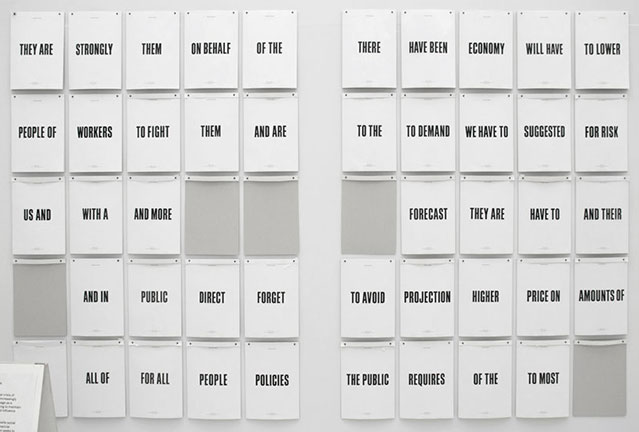
WE ARE FOR MORE REAL GOVERNMENT
Public language and speeches have been used throughout history as mechanism for attaining and maintaining power and dominance over socio-political discourse. The power of language over a...
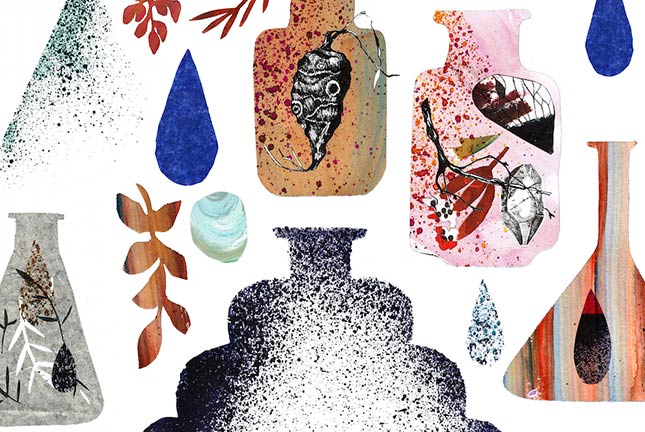
Witch, Troll, Homeopath

ORKA
Icelandic photographer Svala Ragnars graduated in 2013 with an MA in photojournalism and documentary photography from the London College of Communication. Orka is a stunning series of work...
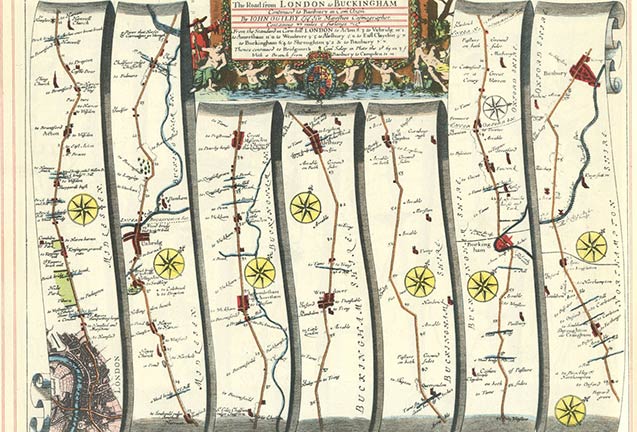
Not-Quite-Suburbia
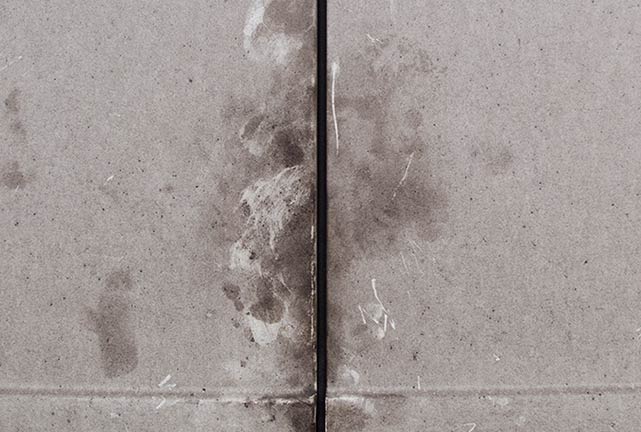
To/From
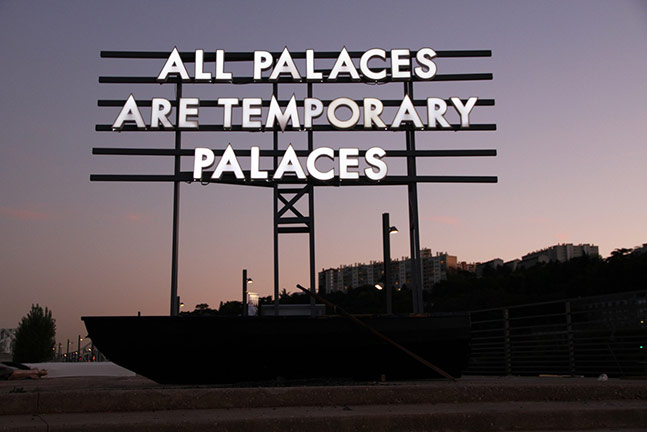
Reinventing Utopia
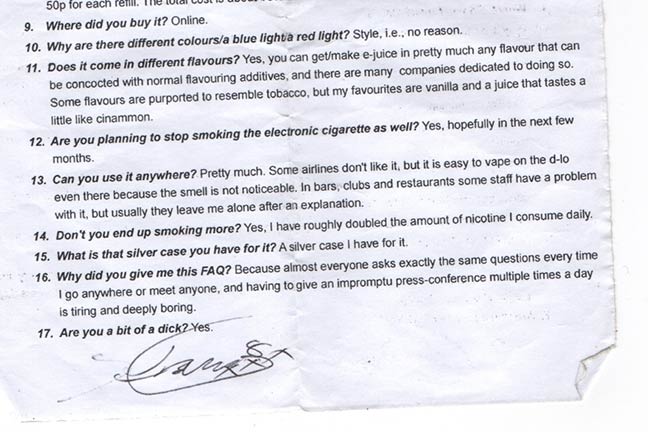
Electronic Cigarette